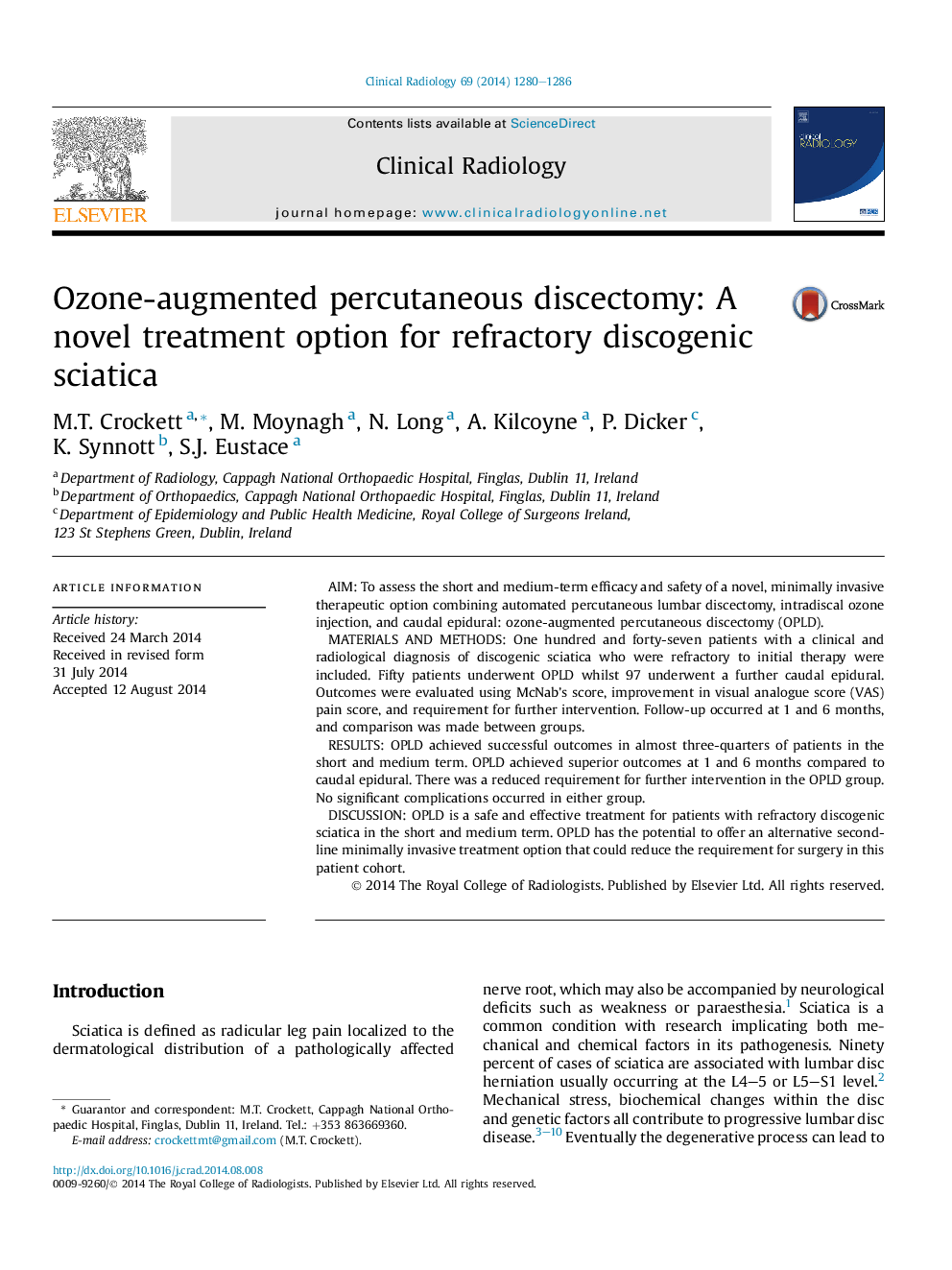| کد مقاله | کد نشریه | سال انتشار | مقاله انگلیسی | نسخه تمام متن |
|---|---|---|---|---|
| 3981655 | 1257699 | 2014 | 7 صفحه PDF | دانلود رایگان |

• Discogenic sciatica is a common condition which causes significant morbidity.
• Ozone augmented percutaneous lumbar discectomy (OPLD) is a novel treatment.
• Comparison was made to caudal epidural injection.
• All outcomes were superior in the OPLD treatment group.
• OPLD appears is an effective treatment for refractory discogenic sciatica.
AimTo assess the short and medium-term efficacy and safety of a novel, minimally invasive therapeutic option combining automated percutaneous lumbar discectomy, intradiscal ozone injection, and caudal epidural: ozone-augmented percutaneous discectomy (OPLD).Materials and methodsOne hundred and forty-seven patients with a clinical and radiological diagnosis of discogenic sciatica who were refractory to initial therapy were included. Fifty patients underwent OPLD whilst 97 underwent a further caudal epidural. Outcomes were evaluated using McNab's score, improvement in visual analogue score (VAS) pain score, and requirement for further intervention. Follow-up occurred at 1 and 6 months, and comparison was made between groups.ResultsOPLD achieved successful outcomes in almost three-quarters of patients in the short and medium term. OPLD achieved superior outcomes at 1 and 6 months compared to caudal epidural. There was a reduced requirement for further intervention in the OPLD group. No significant complications occurred in either group.DiscussionOPLD is a safe and effective treatment for patients with refractory discogenic sciatica in the short and medium term. OPLD has the potential to offer an alternative second-line minimally invasive treatment option that could reduce the requirement for surgery in this patient cohort.
Journal: Clinical Radiology - Volume 69, Issue 12, December 2014, Pages 1280–1286